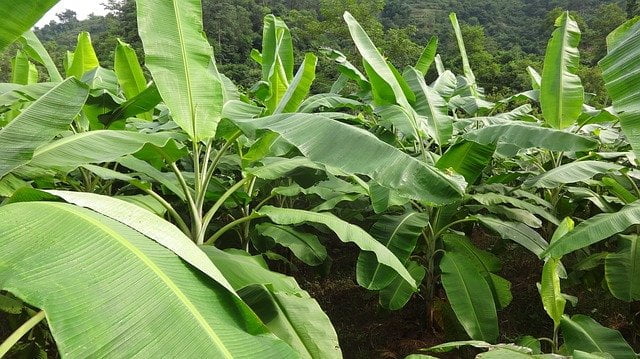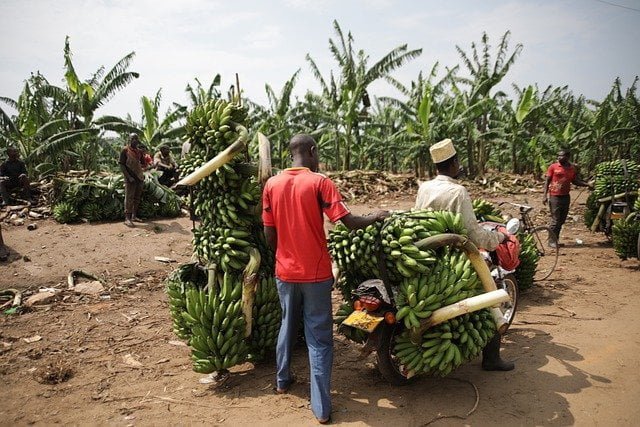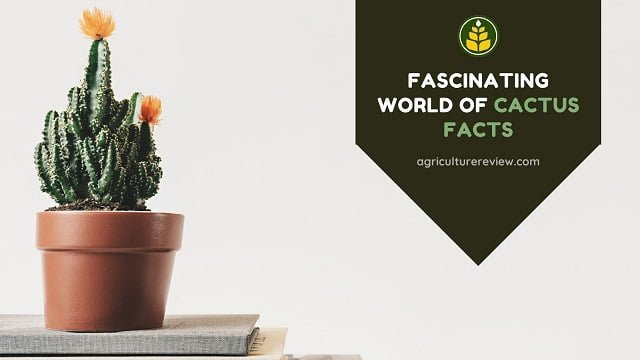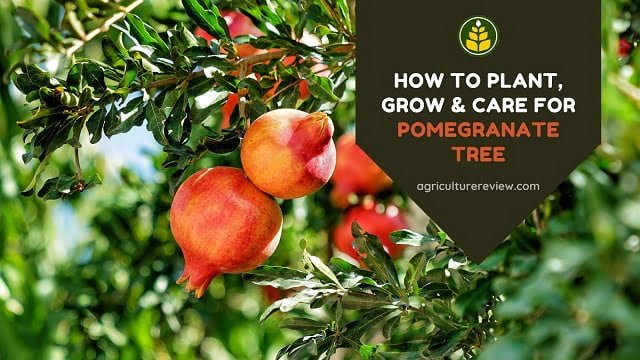This ultimate guide on banana farming will help you to understand complete process of banana farming. Moreover, get to know soil requirements, climate & temperature, field preparation, Irrigation, Fertilizers, etc.
Practicing banana farming is labour intensive. Hence, it is a source of generating employment. Practicing banana cultivation can give you quick returns and consistent income throughout the year.
Table of Contents
Introduction
Banana is botanically a berry but is considered as an edible fruit. It is highly nutritious fruit. One ripe banana have 110 calories, 28 grams carbohydrates, 15 grams natural sugar, 3 grams fibres, 450 milligrams potassium.
It is cultivated worldwide on a large scale. Banana is used for making chips, puree, powder, jam, sauce, vinegar, fertilizer, wine, etc. Moreover people love consuming ripe bananas for its nutritive value and taste. Hence, the market demand is increasing rapidly.
European Union is the largest importer of banana. It imports around 32% of the total global imports of banana. United States is the second largest importer followed by The Russian Federation, Japan, and China.
Source: businessdiary.com
Botanical Classification
Botanical Name: Musa accuminata Colla or Musa balbisiana Colla.
Family: Musaceae.
Order: Zingiberales.
Class: Liliopsida.
Division: Magnoliophyta.
Chromosome Number: 33 (2n = 33)
Source: plants.usda.gov
Origin of Banana
Scientists and researchers believe that Southeast Asia and South Pacific is the origin of banana. It originated around 8000 to 5000 BC. Later on Arab conquerors brought banana to the west and its cultivation started worldwide.
Source: maikfruitfair.org
Area And Distribution
The total production of banana in the world is found to be around 114 Million tonnes (2017). India is the leading producer of banana, it produces 29 Million tonnes of banana annually. Other major banana producing countries are China, Philippines, Brazil, Ecuador, Indonesia, Costa Rica, Mexico, etc.
Globally 5.6 Million hectares of land is dedicated to banana cultivation. Average yield of banana can vary from country to country and varieties. Generally the average yield is around 40 to 50 tonnes per hectare.
Source: www.fao.org
Banana Farming Guide

To get successful in banana farming you will need to know about important aspects for successful farm enterprise. Lack of knowledge and bad practices results in low yield. Hence, knowing about soil type, temperature & climate, field preparation, irrigation, fertilizers, etc. helps in ensuring increased yield.
Soil Requirement
According to TNAU, you can cultivate banana from poorest to richest type of soil. But, well drained, deep, rich loamy and salty clay loam soil is best for growing bananas. Moreover if the soil has adequate fertility and moisture holding capacity then it is quite wonderful.
Soil pH in the range of 6 to 7.5 pH is most preferred for growing bananas. However, avoid growing bananas in ill drained soil or poorly aerated soil with poor soil fertility. Also avoid growing bananas in soil that is too much clayey, or saline, or calcareous.
Before starting banana farming, get your soil tested. If the soil is not too acidic or alkaline, and is rich in organic matter, with adequate amount of Nitrogen, Phosphorus, and Potassium then it is ideal for growing banana.
Climate & Temperature
Banana farming can be easily practiced in tropical to sub-tropical climate. You can start cultivating banana in regions having 70 to 75% relative humidity and temperature range of 15 to 35 degrees Celsius. Temperature below 12 degrees Celsius causes chilling injury and wind velocity above 85 Kilometres per hour can damage the crop.
Average rainfall of 650 to 750 mm is essential for robust plant growth during monsoon. You can grow banana from sea level to an elevation of 2000 metres above mean sea level. But at higher altitudes, you can only grow varieties that are adapted to grow in hilly regions.
Planting Material
Unlike other crops such as wheat or maize, you can not propagate banana from seeds. For propagation of banana, two options are available. The first one is from suckers and second one is from tissue cultured seedlings.
Only 30% of the farmers are using tissue cultured seedlings for banana cultivation. But, the efficiency of banana plant grown from tissue culture is higher. However, just like rest 70% you can also use suckers with well developed rhizomes having actively growing conical bud. The weight of the planting material should be around 450 to 700 grams.
But the main problems that arises in using suckers are infections from pathogens, non uniform crop growth due to variation in age and size of the sucker. Moreover farmer also faces problem in management of the crop and prolonged harvesting.
These are reasons because of which government organizations suggests farmers to use tissue cultured banana seedlings. They show early maturity, are free from any kind of pest and diseases, etc. You can also plant them anytime in the year except during excessive hot and cold climate.
One more advantage is that the 95 to 98% of the plant grown from tissue culture bears bunches. This results in increased yield and reduced capital inputs.
Planting Time
Generally, you can start planting in May to June or during September to October. However, you can plant banana throughout the year but avoid plantation during extreme winter and summer season. Before planting suckers you can practice pre treatment of suckers.
This will help in good health and growth of the suckers. Dip the corm in 0.1% solution of Emisan for 5 minutes. This will helps to avoid wilt disease in banana. Moreover, you can also dip the corm in 0.75% solution of Monocrotophos. After dipping shade dry for 24 hours before plantation.
Planting System
There are are mainly four system for planting of bananas. These are Single row system, Paired row system, Square system, and Triangular system. Each system has their own benefits. You can select any one of them depending on space and land terrain.
| System | Planting Distance | Plants Per Hectare |
|---|---|---|
| Paired Row System | 1.2 x 1.2 x 2.0 metres | 5200 |
| Square System | 1.8 x 1.8 metres | 3025 |
| Triangular System | 1.5 x 1.8 metres | 3630 |
Single Row System
In single row system, we maintain close distance within the row but wider distance between the row. Following this planting has its pros and cons. Yield gets reduced due to less number plants per hectare. But, there is a reduced chance of fungal infection if you follow this system.
Following this system helps in good aeration to plant canopy. Hence, the wet leaves dry out rapidly.
Paired Row System
In paired row system, we maintain 0.90 to 1.20 metres distance between two lines and 1.2 to 2 metres distance between plant to plant. You can easily carry out intercultural operations by following this system.
If you want to use drip irrigation method then following this system will help to reduce the cost of drip irrigation.
Square Row System
This is one of the most common system of planting used for banana farming. You should maintain (1.8 x 1.8)metres spacing between row to row and plant to plant. If you practice this system then it will allow you to add more short lived companion filler trees in the space left between each square.
Triangular System
If you want to grow tissue cultured banana then this system of planting is best for you. Maintain row to row distance of 1.5 metres and plant to plant distance of 1.8 metres. Although this is similar to square system but there is a difference.
In this system, plant in even numbered rows are midway between those in the odd rows. They are not planted opposite to them. Moreover, the distance between two adjacent plant in a row is equal to the perpendicular distance between any two adjacent rows.
Planting Method
You can mainly plant banana suckers or tissue cultured seedlings by following any of these three methods. Just like planting systems, methods of planting bananas have their own pros and cons. You can select and practice any one of them according to your choice.
Pit Method
For practicing this method of plantation, you have to dig pits of size 60 x 60 x 60 centimetres. Fill the pit with the mixture of soil, sand, and Farm Yard Manure. The ratio should be 1:1:1. Plant the sucker in the centre of the pit and compact the soil around the pit.
However, this method is very labour intensive and expensive. But if you follow this method then no earthing up is required. As we do planting at the required depth.
Furrow Method
For practicing this method of plantation, after field preparation, you have to make furrows. You can either do this manually or with the help of a ridger. Plant the suckers at the required spacing. Compact the suckers by applying Farm Yard Manure and soil around the suckers.
You can practice furrow method in annual planting system. But you need to practice earthing up frequently. This helps in covering of exposed rhizomes.
Trench Planting
This planting system is practiced in wet lands. You can prepare the field just like paddy. You can use plenty of water and gauge wheel. Later on water is drained from the field. You can plant the suckers directly in the wet field by pressing them.
After 7 days open 15 centimetres deep trenches both ways. Maintain 4 to 6 plants in each block. Deep the trenches every month by 20 to 25 centimetres. Keep doing this seedlings reaches 1 to 3 leaves. Keep cleaning the trenches within 2 months.
During rainy seasons, you can use some of the trenches to remove excess water from the field.
Field Preparation
If you are practicing banana farming in wetlands then no preparation is required. But if you are practicing single row system then 2 to 4 ploughings are required. However, before planting banana, you can grow green manuring crops. These crops are Sesbania and cowpea.
Plough the field 4 to 6 times and leave the field for 14 days. You can break the clods and bring soil to the finer tilt with the help of rotovator or harrow. During field preparation of field you can add Farm Yard Manure @ 50 tonnes per hectare.
You can level the field by passing blade harrow or laser leveller. Using laser leveller is highly beneficial. It can be used to level wide range of terrain and can also help in conservation of irrigation water. If you are preparing pits for banana plantation then you can follow the following process.
You can dig a pit of (45 x 45 x 45) centimetres. Add 10 Kilograms of well decomposed Farm Yard Manure, 250 grams of Neem cake, and 20 grams of carbofuran. Mix this with top layer soil that you took out to dig the pit. Fill the pit with this mixture and leave it open to solar radiation.
If your field has nematodes, then you can also add fumigants or nematicides. If you want to grow organically then you can use panchgavya or jeevamrit in your field.
Irrigation
Banana plant is a evergreen, shallow rooted plant, hence it requires large quantity of water. Banana crop requires on an average 1,800 to 2000 mm of water annually. During summer you can irrigate the field in an interval of 4 to 5 days. But during winters you can irrigate the field at an interval of 7 to 8 days.
You should avoid irrigating field during rainy season. As excess water can cause root zone congestion. This can result in poor plant health. In total 70 to 75 irrigation should be provided to the crop. If you want to increase the water use efficiency then you can adopt drip irrigation practices in your field.
Drip irrigation system helps in improving crop yield by 23 to 32% and also helps in saving 58% of the water. You can give drip irrigation @ 15 litres of water per plant per day from planting to the fourth month.
From fifth month to shooting stage apply 20 litres of water per plant per day. From shooting stage to 15 days prior to harvesting apply 25 litres of water per plant per day.
Fertilizers
Banana is a heavy feeder crop. A single plant of banana requires 10 to 20 Kilograms of Farm Yard Manure, 200 to 250 grams Nitrogen, 60 to 70 grams Phosphorus, and 300 grams Potassium. However, banana crop requires 7 to 8 Kilograms of Nitrogen, 0.7 to 1.5 Kilograms of Phosphorus, and 17 to 20 Kilograms of Potassium per metric ton yield.
You can apply 100 grams of Nitrogen in 3 split dozes. You can apply as top dressing in the interval of 30, 60, and 120 days after planting. At the time of planting apply 100 grams of Potassium and 40 grams Phosphorus.
You can also adopt fertigation to increase the yield and reduce the loss of nutrients from the soil. In fertigation you can apply water soluble fertilizers with the help of drip irrigation. Using fertigation method can increase yield by 25 to 30%. Moreover, it also helps in reduction of labour cost and time consumption.
To fulfil the micronutrients requirements you can apply 0.5% ZnSO4, 0.2% CuSO4, 0.2% FeSO4, and 0.1% H3BO3. You can apply them as foliar spray at an interval of 3, 5, and 7 months after planting. This also helps in improving yield.
If you want to go completely organic then you can use waste decomposer solution to increase crop yield.
Pests & Diseases
Pests like root stock or rhizome weevil, stem borer, thrips, banana beetle, banana aphids, nematodes etc. can attack on your plant. Diseases like anthracnose, panama wilt, leaf spot, shoot rot, viral diseases, etc. can destroy your crop.
You can save your plant from diseases and pests by using neemastra or aagneyastra periodically.
Intercultural Operation
For successful banana farming you should practice the following intercultural practice. These practices are de-suckering, propping, mulching, Pruning, Mattacking, Earthing Up, Bunch Covering, Bunch Thinning, Denavelling, Peduncle wrapping, wind break, etc.
Sponsered Product: Steel Multi Star Culti-Weeder
De-suckering
You have to keep removing unwanted and surplus suckers. You can either cut the sucker from the ground level. Or you can destroy the heart of the suckers. However, you can also pour kerosene in the heart of sucker. This will also help to destroy unwanted sucker. Only one sucker is retained per plant.
Propping
When bunch emerges then pseudo-stem requires support. You can provide the support from props. For this you can use bamboo poles. Carefully give support by bamboo poles.
Mulching
Mulching helps in increasing the nutrients and water use efficiency. According to TNAU, mulching also helps in increasing yield by 30 to 40%.
Pruning
Time to time pruning of dead and decaying leaves ensures healthy growth of the plant. For maximum bunch development leave at least 6 to 8 healthy leaves on the plant. But, keep removing the rest of unhealthy leaves.
Earthing Up
For formation of better root system and support to the base earthing up is necessary. You can practice earthing up during rainy seasons. This will help to avoid water logging conditions in the field.
Bunch Covering & Thinning
You can cover the bunches with gunny bags or perforated polythene bags. This helps in improving yield by 15 to 20%. For bunch thinning you should remove 1 to 2 small bottom hands from the bunch. Keep 7 to 8 hands for healthy growth. This will help in uniform bunch development.
Denavelling
After the completion of female phase you have to remove the male bud from the bottom. This practice helps in promoting fruit development in the bunch.
Peduncle Wrapping
Peduncle is the bridge between bunch and the plant. It helps in providing nutrients, photosynthates, and water to the developing bunch. Hence, you need to protect it from any kind of injury that can be either from bright sunshine or bacteria or fungi.
For this purpose you can wrap peduncle with either flag leaves or dry banana leaves.
Tagging
You should definitely tag the bunches with respect to the week of emergence and covering.
Wind Break
High pressure wind can cause serious damage to the banana crop. To prevent your crop from wind you can plant Sesbania egyptifolia across the border of the field. Plant them in east – west direction.
Harvesting
You can start harvesting banana at the physiological maturity stage. This will ensure better post-harvest quality of the fruit. You can harvest with the help of sharp sickle. Cut 30 centimetres above the first hand. Generally after the opening of the first hand, it takes 100 to 110 for the bunch to be ready for harvesting.
Yield
According to nhb.gov.in under flood or furrow irrigation system the average yield is around 46.40 tonnes per hectare. But, under drip irrigation it is about 69.72 tonnes per hectare.
FAQ
Banana farming is a type of plantation agriculture system in which banana is cultivated intensively on a large scale for commercial purposes.
Author’s Note
I guess you are now clear on banana farming. If you have any idea, suggestions or query then you can leave your comment below. You can also connect with Agriculture Review on Facebook, Instagram, and Pinterest.







Thank you for a comprehensive write up on banana farming.What can i use in place of jaggery as where i am it is not available? Is molasses OK?
Hi,
You can use sugarcane juice instead of Jaggery to prepare the solution.
I hope this will help!